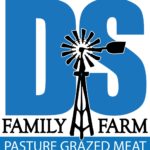Worried about what you are "really" eating? Have peace of mind with pasture grazed meats.
Animal Impact – reed canary grass example
Planned pasture grazing requires orchestrating cattle movement. Yep we think of our cattle moves like making music but we are really trying to get some desired effect applied to the land. Here is an animal impact example from this past spring. In an area invaded by reed canary grass our cattle were able to “open up” the land and allow broad leaf arrowhead (a native wetland plant) to express itself:

So what were the steps to make the above effect on the land? It began in March with a trail setup through this area to move cattle to stockpiled pasture on the other side of the wetland area.

When the trail fence was first setup, the wetland was frozen. Over the next week the wetland thawed and the animal impact started to appear. The cattle trailed through this area before “green up” for a couple of weeks. The area looks kind of nasty in the photo above.

With our continuous move pasture grazing system, we knew this area would “bounce” back in some altered state. Note in the trail photos above we have “open water” areas predominately in the trail. This open water provides a “habitat” as a result of cattle impact.

The red arrow in the photo above points to the location of the broad head arrow leaf plant photo at the top of this blog post. The photo below is a close up of reed canary grass next to the trailed area:

Wetland sites are very forgiving when it comes to trying animal impact scenarios. As we move to upland (drier) sites, animal impact becomes a little more scary. The main difference is planning the recovery time or how long we have before we can bring the cattle back to the area.
Take another look at the photos above. What was the difference in total production? Obviously the solid stand of reed canary grass produced higher forage levels. What was the benefit provided by the higher diversity of the affected area? From our observations, cattle enjoy diversity in their diet and wildlife prefer the diversity in habitat. Feel free to give us a call if you would like to stop by and see our cattle herd impacts… we are always happy to listen to other ideas!




